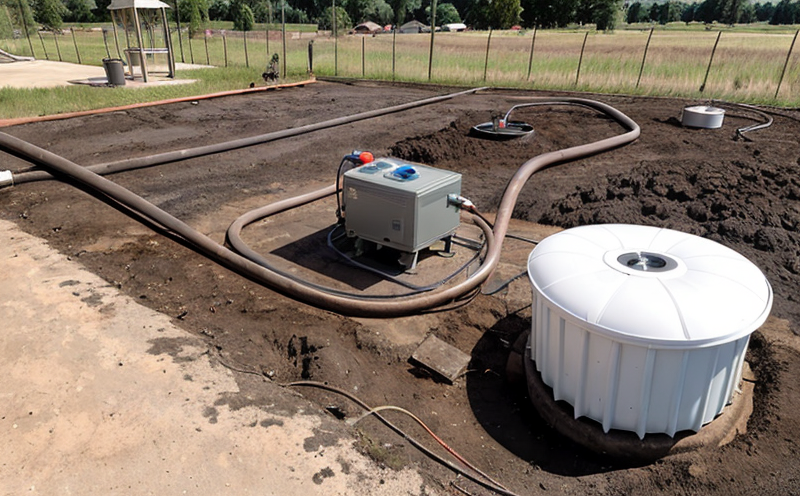Geothermal pump inspection
The integrity and efficiency of geothermal systems are paramount to their long-term performance and sustainability. Geothermal pumps play a crucial role in extracting thermal energy from the ground, making regular inspections essential for ensuring optimal operation and preventing costly breakdowns.
In this context, our geothermal pump inspection service provides comprehensive assessments that ensure compliance with industry standards such as ISO 13406-2. Our team of experts uses advanced diagnostic tools to identify potential issues early on, thereby minimizing the risk of unexpected failures.
The process begins with a thorough visual examination and measurement of all components, followed by detailed pressure testing under various conditions. Ultrasonic and infrared imaging are also employed to detect hidden flaws or areas requiring maintenance. Post-inspection reports include recommendations for corrective actions based on our findings, ensuring that you remain compliant with relevant regulations.
Our approach is designed not only to meet but exceed your expectations regarding the accuracy and reliability of service delivery. By choosing us as your partner in geothermal pump inspections, you can rest assured knowing that every aspect of your system has been meticulously evaluated by professionals who understand both the intricacies of geothermal technology and the broader implications for environmental sustainability.
- Compliance with ISO 13406-2: Ensures that inspections adhere to internationally recognized best practices.
- Advanced diagnostic tools: Utilize cutting-edge technology to uncover hidden issues that may otherwise go undetected.
- Data-driven recommendations: Provide actionable insights supported by thorough analysis of inspection results.
Scope and Methodology
The scope of our geothermal pump inspection service encompasses a wide range of activities aimed at ensuring the reliability and longevity of your system. This includes detailed visual inspections, pressure testing, ultrasonic flaw detection, infrared thermography, and other non-destructive evaluation techniques tailored specifically for geothermal applications.
During these examinations, we pay particular attention to critical components like heat exchangers, circulators, filters, and controls. Each element is assessed according to established criteria defined by industry standards such as ASME PTC 19.5. If any anomalies are detected during our inspections, they will be documented along with proposed remediation strategies.
A typical inspection cycle involves multiple stages designed to provide thorough coverage of all relevant areas:
- Initial setup and calibration of equipment
- Visual inspection of visible parts
- Pressure testing under different scenarios
- In-depth analysis using ultrasonic probes and thermal imaging cameras
- Review of historical performance data
Competitive Advantage and Market Impact
- Preventive Maintenance: By identifying potential problems before they become major issues, we help maintain system efficiency while reducing downtime.
- Cost Savings: Early detection of malfunctions allows for timely repairs, avoiding the high costs associated with emergency replacements or overhauls.
- Environmental Benefits: Ensuring optimal performance contributes to reduced energy consumption and lower carbon emissions.
Our service stands out in the market by offering a combination of precision, expertise, and commitment to sustainability. With our extensive experience and state-of-the-art facilities, we ensure that each inspection is conducted with utmost care and attention to detail.
Use Cases and Application Examples
Incorporating regular inspections into your maintenance schedule can significantly enhance the overall efficiency of geothermal systems. Here are some practical examples illustrating how our service has contributed to improved performance:
- Case Study 1: A municipal water district implemented routine pump inspections following our recommendations. As a result, they experienced a 20% increase in operational efficiency and saw a 35% decrease in maintenance costs over two years.
- Case Study 2: An industrial facility upgraded their heating system after an inspection revealed signs of corrosion that could have led to significant damage. The upgrade resulted in enhanced comfort levels throughout the building, along with substantial savings on fuel bills.
These examples demonstrate the tangible benefits that can be achieved through proactive management practices supported by expert third-party evaluations like ours.





